"We find them smaller and fainter, in constantly increasing numbers, and we know that we are reaching into space, farther and farther, until, with the faintest nebulae that can be detected with the greatest telescopes, we arrive at the frontier of the known universe." -Edwin Powell Hubble
With 110 deep-sky objects scattered throughout the heavens, the Messier Catalogue provides skywatchers across the globe with a number of spectacular targets, from nearby nebulae and clusters to spectacular, distant galaxies. Each Monday, we spotlight a new one right here.
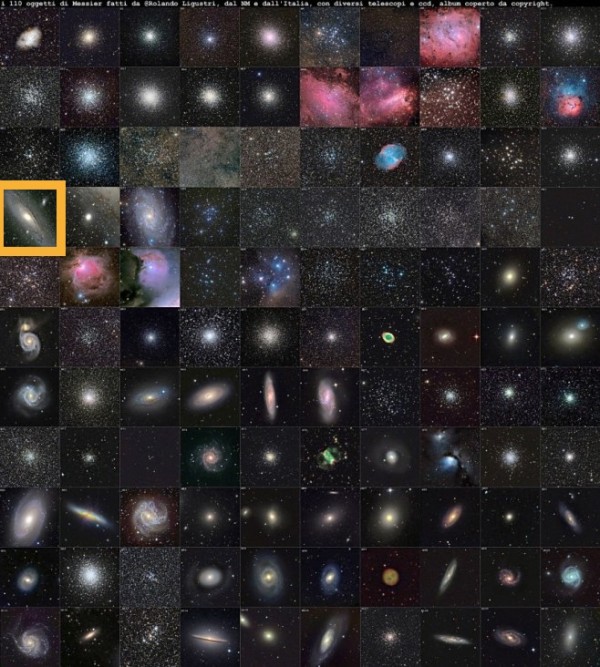 Image credit: Rolando Ligustri, taken over many years, retrieved from http://www.itelescope.net/.
Image credit: Rolando Ligustri, taken over many years, retrieved from http://www.itelescope.net/.
But there's only one Messier object that can lay claim to literally having changed our picture of the entire Universe. If you only join me for one Messier Monday ever, make sure it's this one. Here's how to get started finding Andromeda, also known as Messier 31.
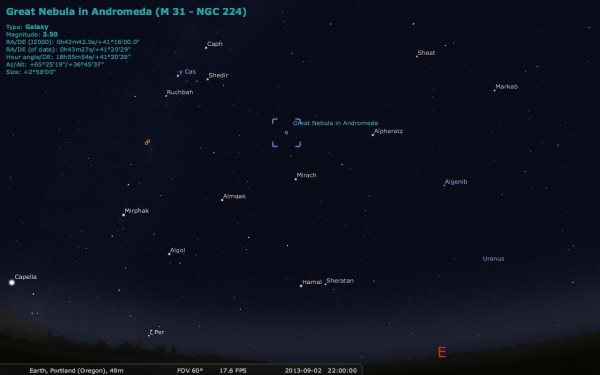 Image credit: me, using the free software Stellarium, via http://stellarium.org/.
Image credit: me, using the free software Stellarium, via http://stellarium.org/.
Just after sunset (at this time of year), look towards the eastern portion of the sky. High above the horizon and slightly towards the north, you'll find the classic "W" in the constellation Cassiopeia, while closer towards the horizon (below the bottom of the "W") you'll find a line of four stars that stand out: Mirphak (the brightest), Almaak, Mirach, and Alpheratz (from L-R, above).
Focus on Mirach and Alpheratz, and that will take you towards M31, the Great Nebula in Andromeda.
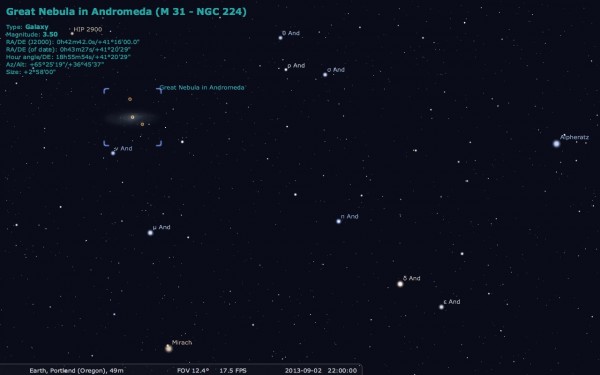 Image credit: me, using the free software Stellarium, via http://stellarium.org/.
Image credit: me, using the free software Stellarium, via http://stellarium.org/.
From Mirach, head "up" from the horizon (or back towards Cassiopeia, except slightly less north), and you'll see two naked-eye stars in a row: μ Andromedae (closer to Mirach) followed by ν Andromedae, which is slightly dimmer. If you've got a telescope, binoculars, or just dark skies and good vision, continue upwards just a single degree from ν Andromedae, and you won't be able to miss the spectacular extended object that awaits you.
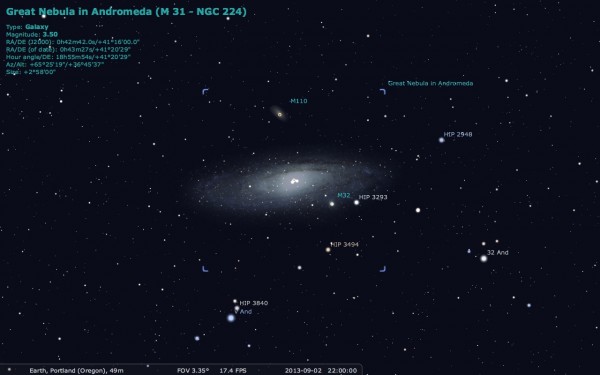 Image credit: me, using the free software Stellarium, via http://stellarium.org/.
Image credit: me, using the free software Stellarium, via http://stellarium.org/.
This is the one astronomical object, moreso than any other, that changed our perception of what a galaxy is, and gave rise -- less than a century ago -- to our modern understanding of the entire Universe. Even though it was known since at least the 10th Century, details were pretty sparse for a very long time. Messier himself, writing in 1764, observed the following:
The beautiful nebula of the belt of Andromeda, shaped like a spindle; M. Messier has investigated it with different instruments, & he didn't recognise a star: it resembles two cones or pyramides of light, opposed at their bases, the axes of which are in direction NW-SE; the two points of light or the apices are about 40 arc minutes apart; the common base of the pyramids is about 15'.
Remember, without an insanely large telescope or photographic technology, what one can see is very limited; to Messier, it probably looked somewhat like this.
Although telescopes became larger and larger over the 18th and 19th centuries, it wasn't until the development of astrophotography -- and the pioneering techniques of an amateur, Isaac Roberts -- that we realize that this object had a spiral structure, something that only came out due to the long-exposure techniques he developed.
What you're looking at, below, is his magnum opus, and the first-ever photograph of another galaxy, dated all the way back to 1888.
Around 1900 or so, there was an intense debate that raged for decades as to what these spiral nebulae actually were. Were they proto-stars, as some claimed: nebulous regions within our own Milky Way that were in the process of forming new stars and planetary systems? Or were they, as contested by others, "island Universes" in their own rights, well outside of the Milky Way, each consisting of a vast array of stellar systems not so different from the ones in our own galaxy, which would then be just one of many?
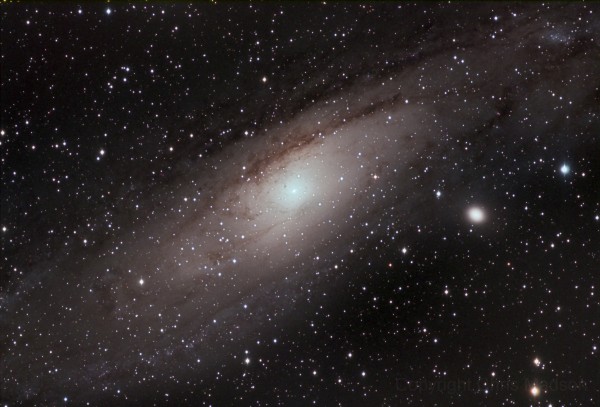 Image credit: Christopher Madson, user mads0100 of astrobin, via http://www.astrobin.com/54638/.
Image credit: Christopher Madson, user mads0100 of astrobin, via http://www.astrobin.com/54638/.
Looking at a modern picture of Andromeda -- the largest galaxy as viewed from Earth -- it's easy to forget how we came to learn what we know today. You see, Andromeda is the largest of all spirals in the night sky from our vantage point; regardless of what it was, it was reasonable to assume the reason it was so big is because it was closer to us than all the others.
In the early 1920s, a young Edwin Hubble was working at Mount Wilson observatory, where he had access to the 100-inch (2.5 meter) Hooker Telescope, which was the most powerful telescope in the world at the time.
In October of 1923, Hubble, along with his assistant, Milton Humason, was searching for novae, or flare-ups that happen when white dwarfs accrue enough material on their surface to briefly ignite nuclear fusion.
While looking at the area around M31, Hubble saw one, then another, and then yet another. And then something unexpected happened: he saw a fourth, in the same location as the first.
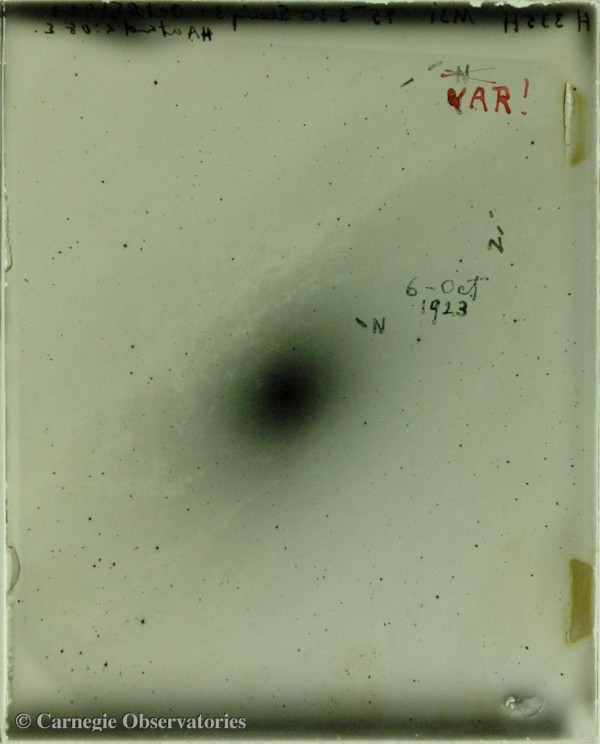 Image credit: Carnegie Observatories, via http://obs.carnegiescience.edu/PAST/m31var.
Image credit: Carnegie Observatories, via http://obs.carnegiescience.edu/PAST/m31var.
That was no nova; novae take anywhere from a few years to thousands of years to refuel, this simply couldn't happen in a matter of hours. No, the only thing that could flare up, go away, and then flare up again was a variable star. This was such an exciting discovery that Hubble crossed out the "N" for Nova and wrote "VAR!" for variable star.
Why was this so exciting?
Because there's a relationship between the period of variability of a star and how intrinsically bright it is! So if you measure -- as Hubble easily could -- how bright this star appears, and you know how intrinsically bright it actually is, you know its distance!
And that was how we figured out that this object -- the Andromeda Nebula -- was actually the Andromeda Galaxy, located far beyond the full extent of the Milky Way galaxy.
It wasn't long before variable stars were measured in dozens of galaxies, and that a relationship was noticed between the distances to these galaxies and their recession speed relative to us; by the end of the 1920s, we had discovered the Hubble expansion of the Universe!
And as our eyes on the Universe have opened in different wavelengths, we've learned ever so much more about our nearest, giant galactic neighbor.
For one, the full extent of the Andromeda Galaxy is about three degrees across, making it about six times the diameter of the full Moon as seen from Earth. It's the largest galaxy in our local group, at least 25% more massive than we are (despite this flawed study) and containing around a trillion stars, whereas we top out at 200-400 billion.
We know how many stars are there from infrared studies, and we also know something a little unexpected: Andromeda has a supermassive black hole, just like we do. But unlike our black hole, which is around 4 million solar masses, Andromeda's is closer to 100 million, as shown in blue, below, thanks to Chandra's X-Ray eyes.
The Ultraviolet part of the spectrum shows hot, young blue stars, as well as ionization regions that emit at very particular wavelengths when electrons and atomic nuclei come together. Depending on what part gets highlighted by an observatory can give very different results: compare the mosaic from SWIFT, below,
with that of GALEX, also in the UV.
Andromeda is our big sister in the local group; we're the second largest galaxy by a wide margin over #3, the Triangulum Galaxy, but Andromeda's got us beat!
While the rest of the Universe recedes away from us, Andromeda, the Milky Way and the rest of the local group are gravitationally bound together. Based on the way Andromeda is moving towards us, we should expect it to merge with our own galaxy in just under another 4 billion years. Could we fast-forward in time, the sights we'd see would be spectacular.
While the rest of the Universe beyond our local group flits away from us as the Universe expands, Andromeda is the largest exception to the rule, as it hurtles towards us across the millions of light years separating the two of us.
I often tell you that the most spectacular images of any Messier object comes from the Hubble Space Telescope, whenever it's available. This is still true, but Andromeda (M31) is far too big to fit into a single Hubble frame. Instead, I'd like to show you a much rarer view of this galaxy that comes from Hubble.
This is just a small, tiny portion of the disk of the Andromeda Galaxy, at a far-reduced resolution. If we instead head on over to the full-resolution version of this image, we can see -- amazingly -- that there are all sorts of interesting objects contained within even the dense star-fields of Andromeda, including a number of distant galaxies that, so far, only Hubble's eyes can open for us.
And there's no topping that! So that concludes another Messier Monday! Including today’s entry, we’ve taken a look at the following Messier objects:
- M1, The Crab Nebula: October 22, 2012
- M2, Messier’s First Globular Cluster: June 17, 2013
- M5, A Hyper-Smooth Globular Cluster: May 20, 2013
- M7, The Most Southerly Messier Object: July 8, 2013
- M8, The Lagoon Nebula: November 5, 2012
- M12, The Top-Heavy Gumball Globular: August 26, 2013
- M13, The Great Globular Cluster in Hercules: December 31, 2012
- M15, An Ancient Globular Cluster: November 12, 2012
- M18, A Well-Hidden, Young Star Cluster: August 5, 2013
- M20, The Youngest Star-Forming Region, The Trifid Nebula: May 6, 2013
- M21, A Baby Open Cluster in the Galactic Plane: June 24, 2013
- M25, A Dusty Open Cluster for Everyone: April 8, 2013
- M29, A Young Open Cluster in the Summer Triangle: June 3, 2013
- M30, A Straggling Globular Cluster: November 26, 2012
- M31, Andromeda, the Object that Opened Up the Universe: September 2, 2013
- M33, The Triangulum Galaxy: February 25, 2013
- M37, A Rich Open Star Cluster: December 3, 2012
- M38, A Real-Life Pi-in-the-Sky Cluster: April 29, 2013
- M40, Messier’s Greatest Mistake: April 1, 2013
- M41, The Dog Star’s Secret Neighbor: January 7, 2013
- M44, The Beehive Cluster / Praesepe: December 24, 2012
- M45, The Pleiades: October 29, 2012
- M48, A Lost-and-Found Star Cluster: February 11, 2013
- M51, The Whirlpool Galaxy: April 15th, 2013
- M52, A Star Cluster on the Bubble: March 4, 2013
- M53, The Most Northern Galactic Globular: February 18, 2013
- M56, The Methuselah of Messier Objects: August 12, 2013
- M57, The Ring Nebula: July 1, 2013
- M60, The Gateway Galaxy to Virgo: February 4, 2013
- M65, The First Messier Supernova of 2013: March 25, 2013
- M67, Messier’s Oldest Open Cluster: January 14, 2013
- M71, A Very Unusual Globular Cluster: July 15, 2013
- M72, A Diffuse, Distant Globular at the End-of-the-Marathon: March 18, 2013
- M74, The Phantom Galaxy at the Beginning-of-the-Marathon: March 11, 2013
- M78, A Reflection Nebula: December 10, 2012
- M81, Bode’s Galaxy: November 19, 2012
- M82, The Cigar Galaxy: May 13, 2013
- M83, The Southern Pinwheel Galaxy, January 21, 2013
- M86, The Most Blueshifted Messier Object, June 10, 2013
- M92, The Second Greatest Globular in Hercules, April 22, 2013
- M94, A double-ringed mystery galaxy, August 19, 2013
- M97, The Owl Nebula, January 28, 2013
- M99, The Great Pinwheel of Virgo, July 29, 2013
- M102, A Great Galactic Controversy: December 17, 2012
- M104, The Sombrero Galaxy: May 27, 2013
- M108, A Galactic Sliver in the Big Dipper: July 22, 2013
Come back next week for another look at one of the 110 unique objects that make up the Messier catalogue, only here, only on Messier Monday!

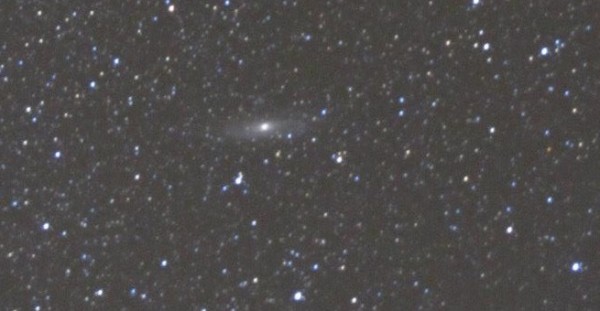
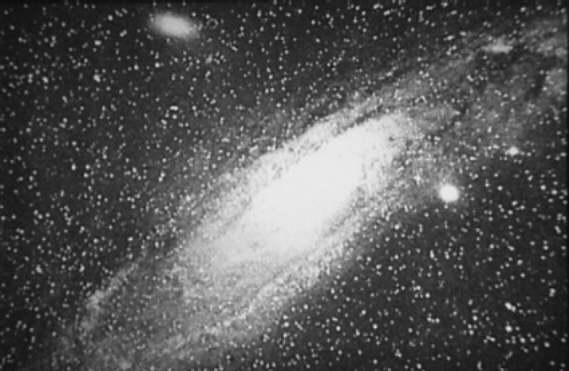
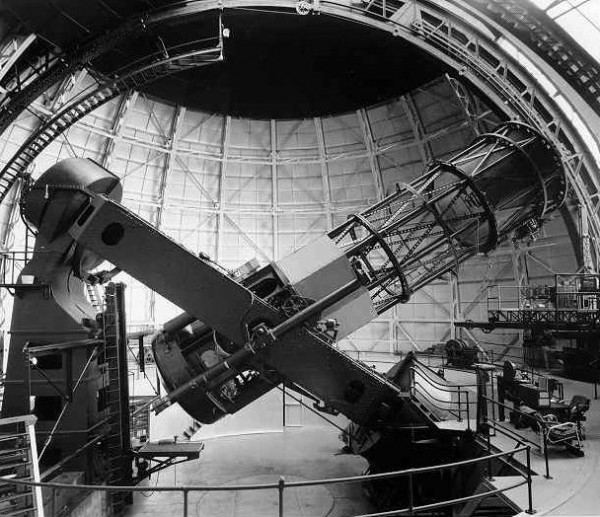
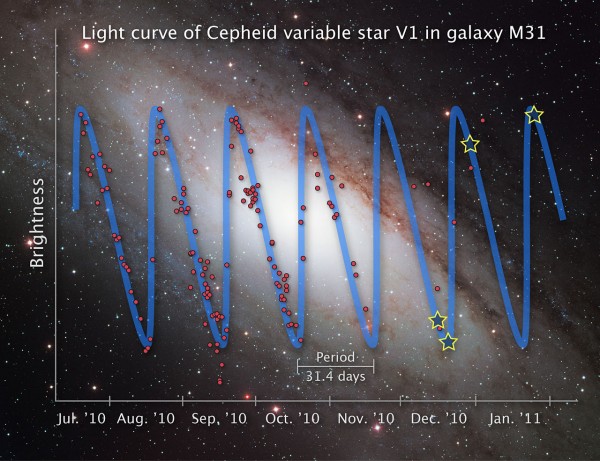
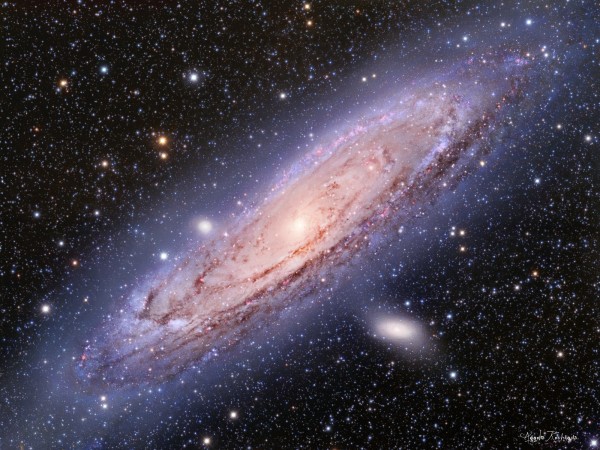
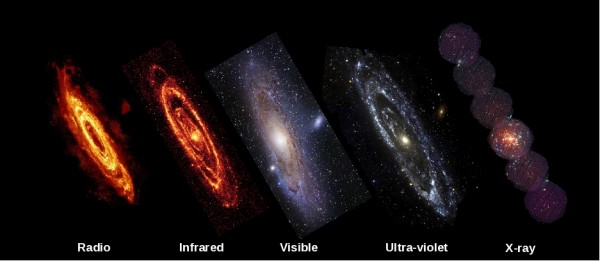

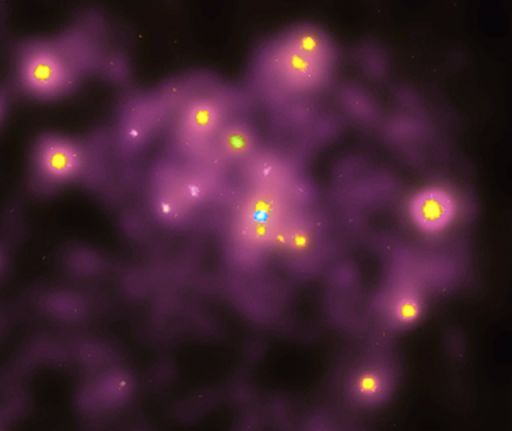
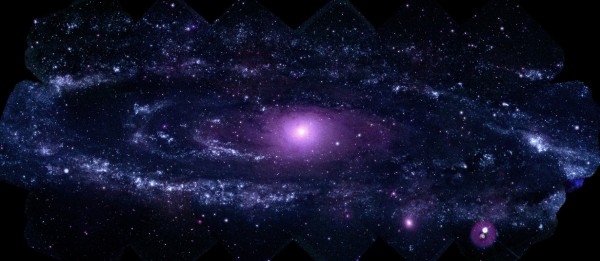
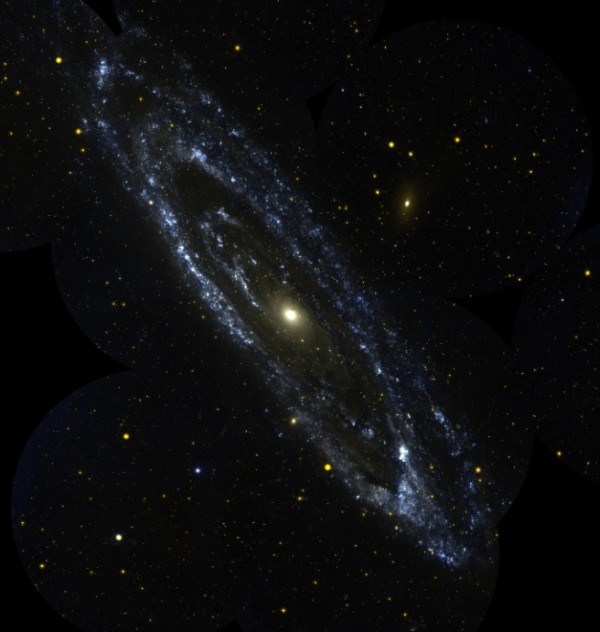
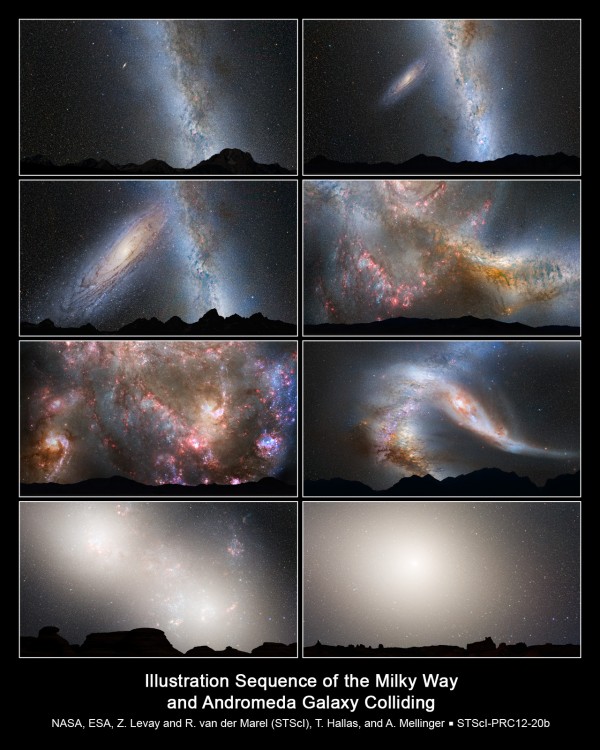
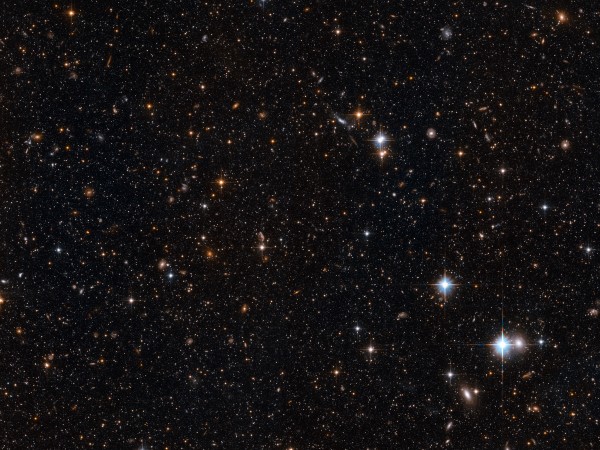

If Andromeda is ~25% more massive, but has 3x-4x as many stars as the Milky Way, does that mean our galaxy has more massive stars on average? And if so, what can we deduce from that about the relative ages of the galaxies? This is very interesting.
One of these days can you explain how we knew that there was this relationship between the period of a variable star and its intrinsic brightness? An awful lot seems to hinge off this and I've never seen it explained.
(Or if you have inthe past and I missed it, could you post a link?)
@Dave: What having more massive stars tells us is that the Milky Way has had a higher star formation rate in recent times (the last few million years or so), at least relative to size, than the Andromeda Galaxy. The lifetime of a star of mass M is proportional to 1/M^3 (a burn rate proportional to M^4 is required to maintain pressure balance, and the amount of fuel available is proportional to M), so massive stars burn out quickly. A lower average mass per star therefore means the stars are, on average, older. But since new stars form every now and then, that doesn't tell us anything about the relative ages of the Milky Way and Andromeda.
Winner! But did you give it a shot at least?
@Bob Dowling #2:
The periodicity/luminosity relationship among Cepheid variables was first observed by Henrietta Leavitt in 1912, based on her observations on variable stars in the Magellenic clouds (to a first approximation, all the stars there are about the same distance away). What's left is to get a measurement to some Cepheids by some other way, ideally parallax, but there are not so many that are close enough to get good parallax measurements from. See:
http://curious.astro.cornell.edu/question.php?number=128
This may be a dumb question, but how did Hubble know that the variable star was the same distance as Andromeda, and not in front of or behind it?
Pizzled: I'm betting he didn't since he couldn't measure the distance of all the objects in Andromeda, it was just a reasonable assumption. You have an apparently star-less extended nebula, that only resolves into an enormous number of stars when viewed with a huge telescope, and a star coincident in the sky with that object that is an enormous distance away.
It probably took repeated observations of Cepheids coincident with spiral nebulae at extreme distances to really be sure.
I like this and I’m taking it in my computer! But I have some notifications: First of all Andromeda cannot merge with our galaxy because they are not collided in the future, but they will pass each other, because in this way the galaxies created they own gravitation fields, see USM Q&A www.kanevuniverse.com . Second through carefully observation of the stars in this galaxy (especially on its periphery) we can estimate how quickly the stars pullout from the center of the galaxy, where they were born, see Q&A www.kanevuniverse.com . This process is very slowly one, we need comparison of the pictures of the stars localization for about minimum tens of years period to passes! This is for more difficult to observe in our own galaxy, because we are part from this movement!
You can find a more detailed explanation of Henrietta Leavitt's discovery of the period-luminosity relationship for Cepheids -- including some of the graphs from her original work -- at
http://spiff.rit.edu/classes/phys240/lectures/lmc/lmc.html
I believe the reason the Milky Way has a higher mass than its star population would indicate relative to Andromeda is because the Milky Way has more interstellar gas that hasn't formed into stars. Thus, the Milky Way has a higher star formation rate than Andromeda.
More linkspam from an unreliable and likely criminal (or at the least unlikely not to be hacked by a criminal) source.
Discard it utterly.
Most galaxies are in fact moving away from us, but there are a few exceptions. NGC 1569, for example, is a dwarf galaxy literally approaching the Earth despite being about 11 million light years away. M31 is definitely is an exception as it will merge with the Milky Way.